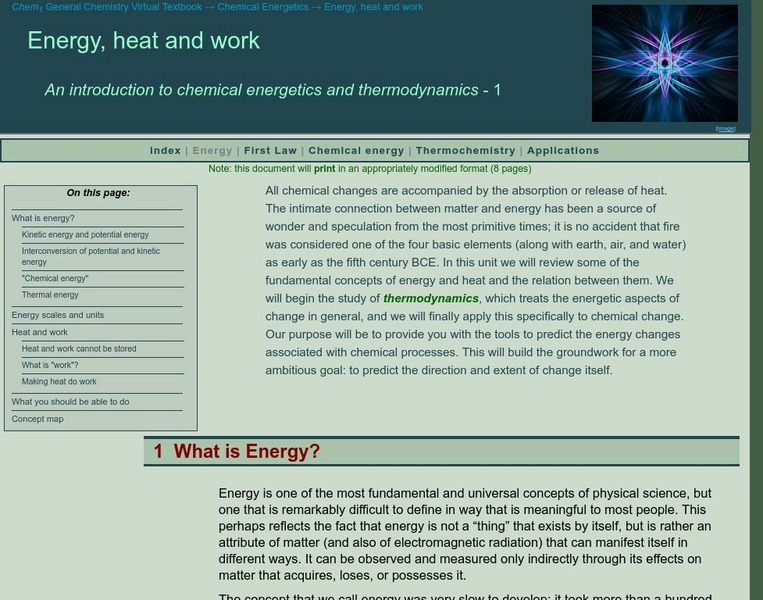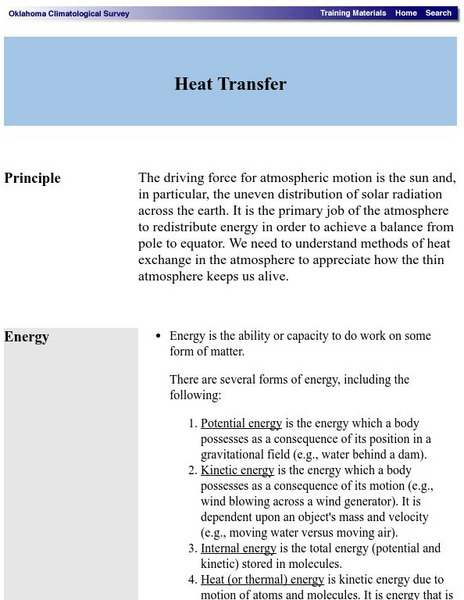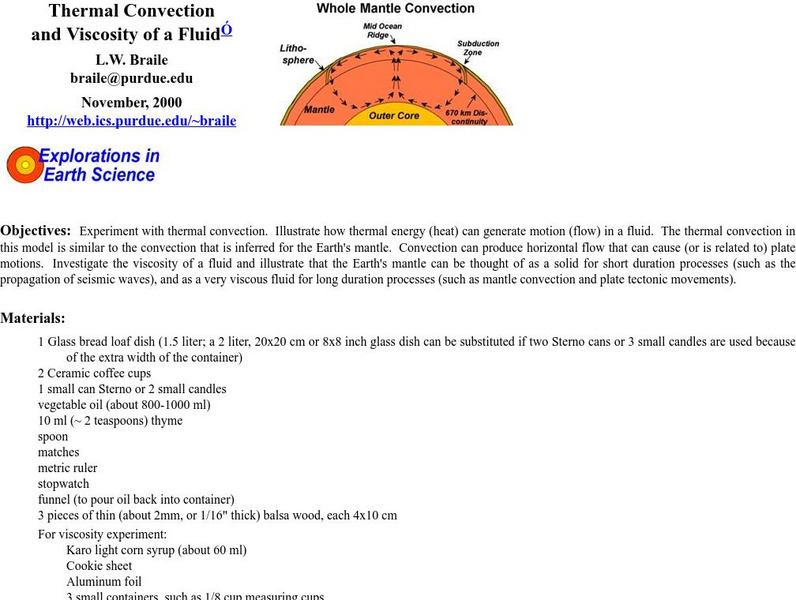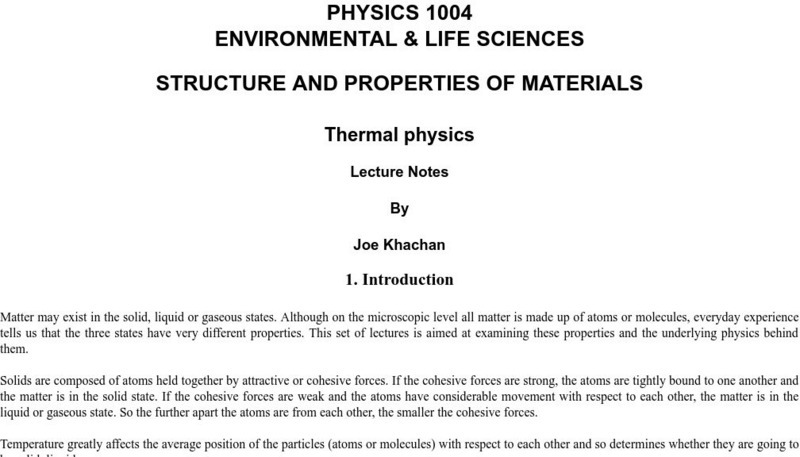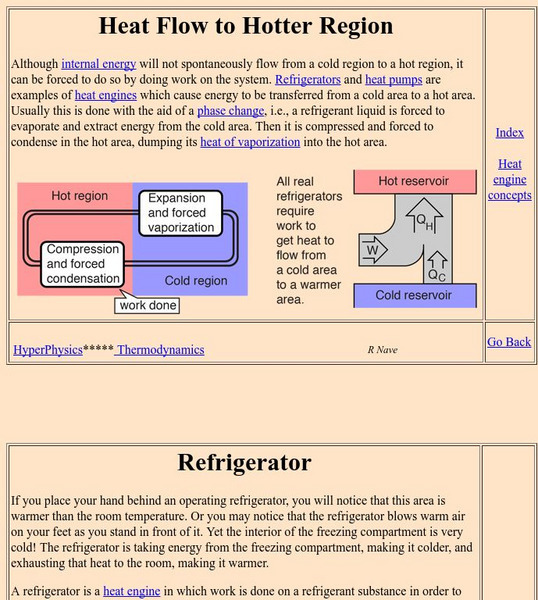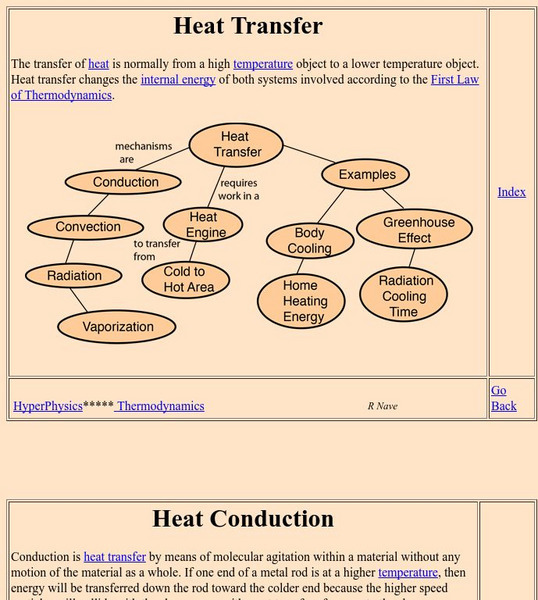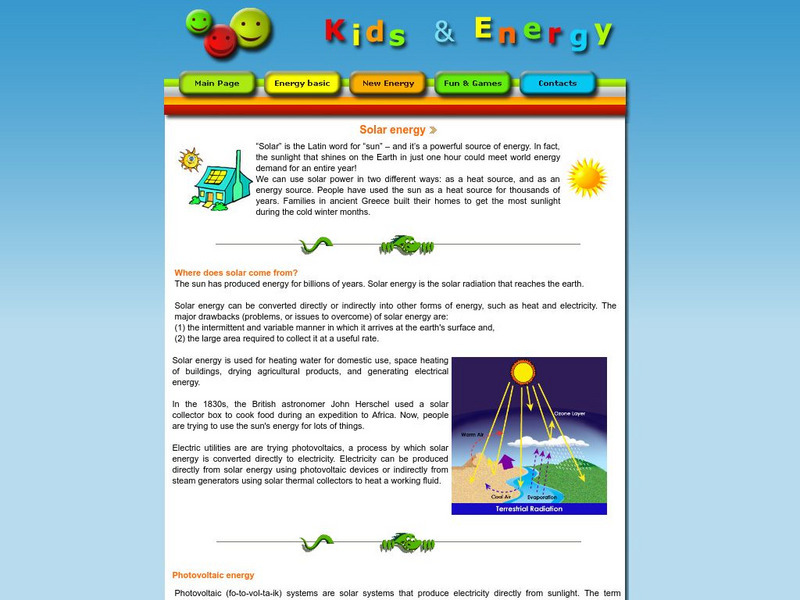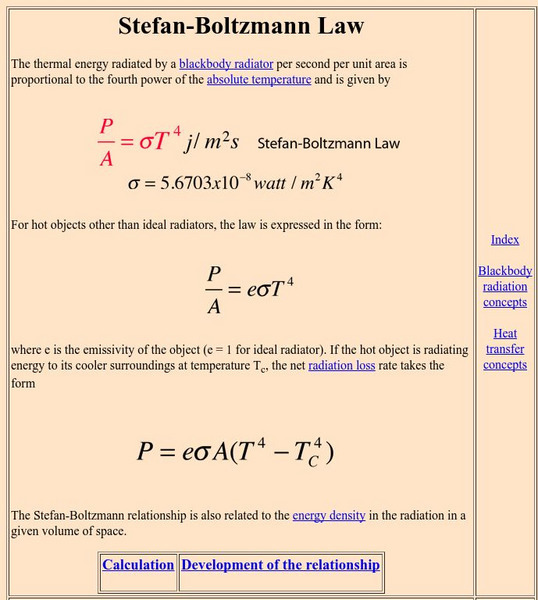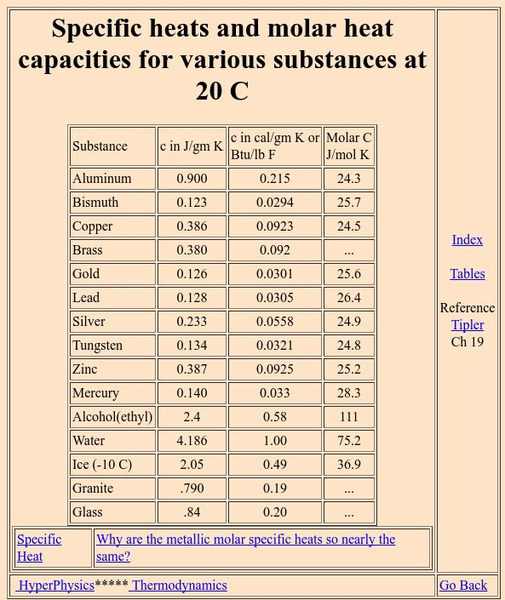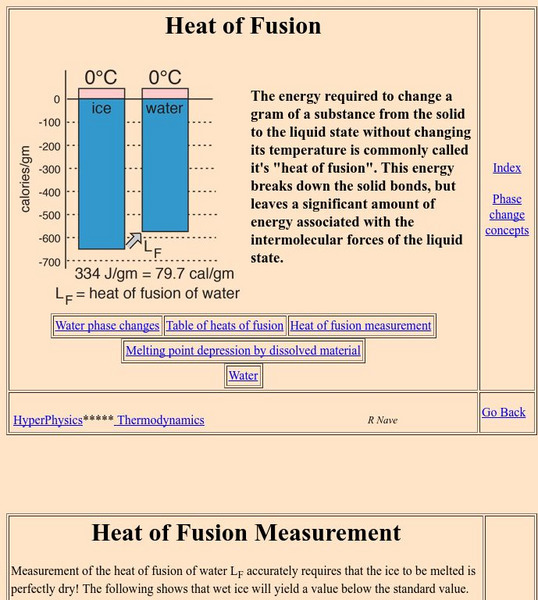Rochester Institute of Technology
Heat Transfer
Use an exciting role play activity to teach young chemists about the importance of heat transfer in maintaining homeostasis. They assume the role of a dog sled owner who has been abandoned and must fend for themselves with only a...
It's About Time
Renewable Energy Sources - Solar and Wind
There has been a huge solar energy spill! Let's go outside to play in it. This lesson includes multiple experiments showcasing solar and wind energies. Scholars build a solar heater and an anemometer before testing the results. The...
International Technology Education Association
Pixel This!
Did the image I drew match the image you saw? By simulating a satellite and a ground station, teams of two transmit data in the form of pixels in order to recreate an image. They use four different levels of brightness, creating slightly...
European Space Agency
European Space Agency: Impress: Heat Transfer
Learn about the transfer of thermal energy through concise information, and illustrated animations. Contains descriptions of conduction, convection, and radiation.
Science Struck
Science Struck: Examples of Thermal Energy
Describes examples of thermal energy in the natural world from the Sun, the oceans, and the Earth.
University of Waterloo (Canada)
The University of Waterloo: The Heating Curve
The heat of vaporization along with several other thermal properties are explained. Sample problems are given. Illustrations.
Simon Fraser University
Chem1 Virtual Textbook: Energy, Heat, and Temperature
As part of a larger resource called "Getting started in Chemistry," this page examines various topics related to energy. The types of energy discussed include kinetic, potential, thermal, and chemical.
Simon Fraser University
Chem1 Virtual Textbook: The Basics of Energy, Heat, and Work
With an overview of topics related to chemical energetics, this site provides a foundation to a study of thermodynamics and its relation to energy, heat, and work.
State Energy Conservation Office-Texas
State Energy Conservation Office: Electricity From the Sun [Pdf]
Discusses forms of renewable energy that rely on the sun. For example, wind is created when solar energy heats the air, and biomass is solar energy that has been stored in plants.
Oklahoma Mesonet
Oklahoma Climatological Survey: Heat Transfer
A discussion from the Oklahoma Climatological Survey of the thermal factors effecting the movement of air masses in the atmosphere. Numerous topics such as methods of heat transfer, latent heat, phase changes (including sublimation and...
Purdue University
Purdue University: Thermal Convection
Students build a model representing the properties of Earth's mantle, illustrating how thermal energy creates movement in a fluid.
US Energy Information Administration
U.s. Eia: Energy Kids: Renewable Energy: Solar
This is a resource on solar energy, photovoltaic energy, solar thermal heat, solar thermal power plants and other forms of energy.
CK-12 Foundation
Ck 12: Physics: Thermal Properties Study Guide
A study guide for concepts related to thermal energy.
FT Exploring
Ft Exploring: Energy Changes Make Things Happen
Nothing can happen without energy. Here you can learn about the many different ways that energy makes things happen.
University of Sydney (Australia)
University of Sydney: Structure and Properties of Materials/thermal Physics
An exhaustive set of "lecture notes" on various topics in thermal physics (including thermal expansion). Explanations are well done and more interesting than most. Includes both a mathematical and conceptual treatment of topics. Humor,...
Georgia State University
Georgia State University: Hyper Physics: Heat Engine Cycle
The heat engine cycle is defined and discussed. So pressure-volume diagrams are introduced and their use in depicting the cycles of a heat engine is demonstrated. Informative graphics are accompanied by reason-filled explanations.
Georgia State University
Georgia State University: Hyper Physics: Thermal Expansion
Defines thermal expansion and elaborates on the concept of linear expansion. Provides the equation for linear expansion and includes an interactive JavaScript form which allows the visitor to investigate the relationship between...
Georgia State University
Georgia State University: Hyper Physics: Heat Pump
Heat flow from a hot region to a cold region is described and explained. Applications of this phenomenon (specifically heat pumps and refrigerators) are discussed. Excellent graphics.
Georgia State University
Georgia State University: Hyper Physics: Heat Flow to Hotter Region
Heat flow from a hot region to a cold region is described and explained. Applications of this phenomenon (specifically heat pumps and refrigerators) are discussed. Excellent graphics.
Georgia State University
Georgia State University: Hyper Physics: Heat Convection
Using understandable words and exceptional graphics, this page describes the transfer of energy by means of the convection process. Contains several links to related topics.
Energy for Sustainable Development
Esd Bulgaria: Kids & Energy: Solar Energy
Explains what solar energy is, how it differs from photovoltaic energy, and how it is harnessed to produce electric power for humans.
Georgia State University
Georgia State University: Hyper Physics: Heat Radiation
The process of energy transfer by radiation is discussed. An equation for calculating the rate of radiative energy transfer is provided. Variables in the equation are explained. An interactive form allows for problem-solving practice...
Georgia State University
Georgia State University: Hyper Physics: Specific Heats and Molar Heat Capacities
A lengthy listing of values for specific heats and molar heat capacities for a variety of substances at 20 C. An explanation is given for why molar heat capacities for metals are nearly the same.
Georgia State University
Georgia State University: Hyper Physics: Heat of Vaporization
A discussion of the vaporization process and the energy changes which accompany the process. Includes an informative graphic and a discussion of how to determine the heat of vaporization.






